What Is the Way in Which Artists Arrange the Elements of Art in Their Artwork?
Within: The ultimate collection of elements of fine art examples and elements of art definitions, plus helpful resources for teaching the elements of art.
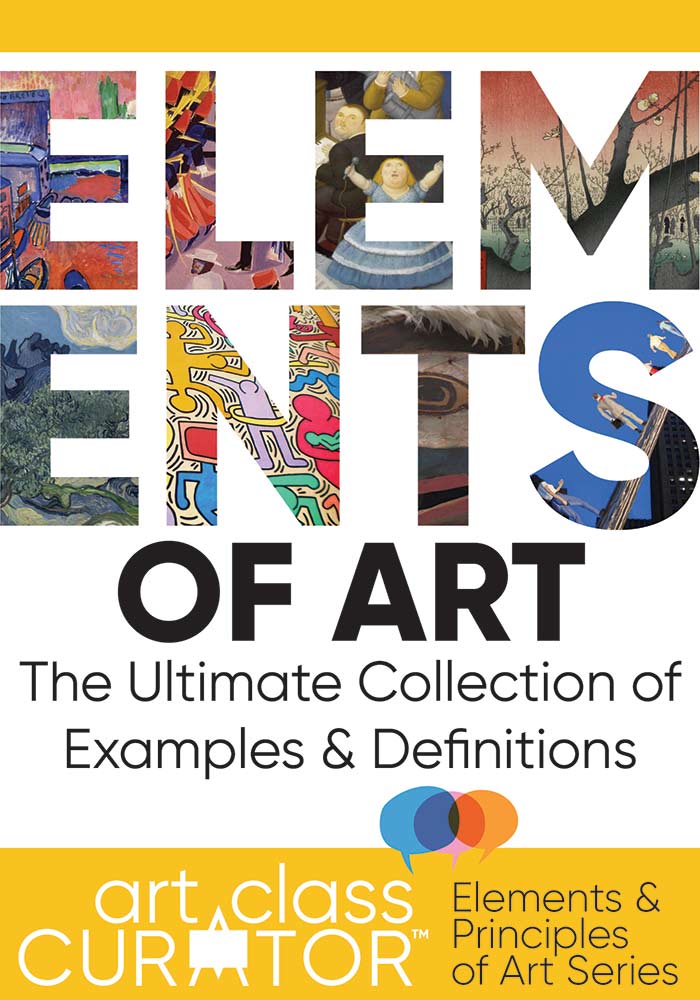
What are the Elements and Principles of Art?
The elements of art and principles of pattern are the cardinal pieces that make upwards an artwork. Most works of fine art will brand employ of many or all of the elements and principles of art. Nosotros oftentimes approximate art by how effectively the artist used these blueprint fundamentals even before nosotros learn virtually them.
The elements of fine art are the building blocks of an artwork: color, line, shape, form, value, texture, and space. They are the tools artists use when creating an artwork.
The principles of design are how those building blocks are arranged: contrast, rhythm, proportion, residual, unity, emphasis, movement, and variety. They are the ways an artist tin organize the elements of art to create a broad range of effects.
Each of these art fundamentals are closely related and many of them overlap. When combined, they produce a complete artistic vision.
Why are the Elements and Principles of Art Of import?
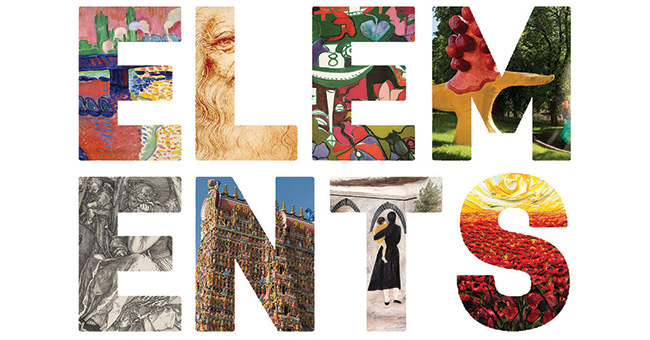
Knowing the elements and principles of fine art boosts visual literacy. Artists and creators make more than powerful works when they utilize the principles of art. When viewers are familiar with the elements of art, they go more aware of the details and tin better appreciate what they encounter and the message behind information technology.
Connecting with fine art makes us more empathetic and strengthens the material of society. In the historic period of the internet, agreement how and why advertisers make blueprint decisions can empower students with information and make them less susceptible to manipulation.
Teaching the Elements and Principles of Fine art
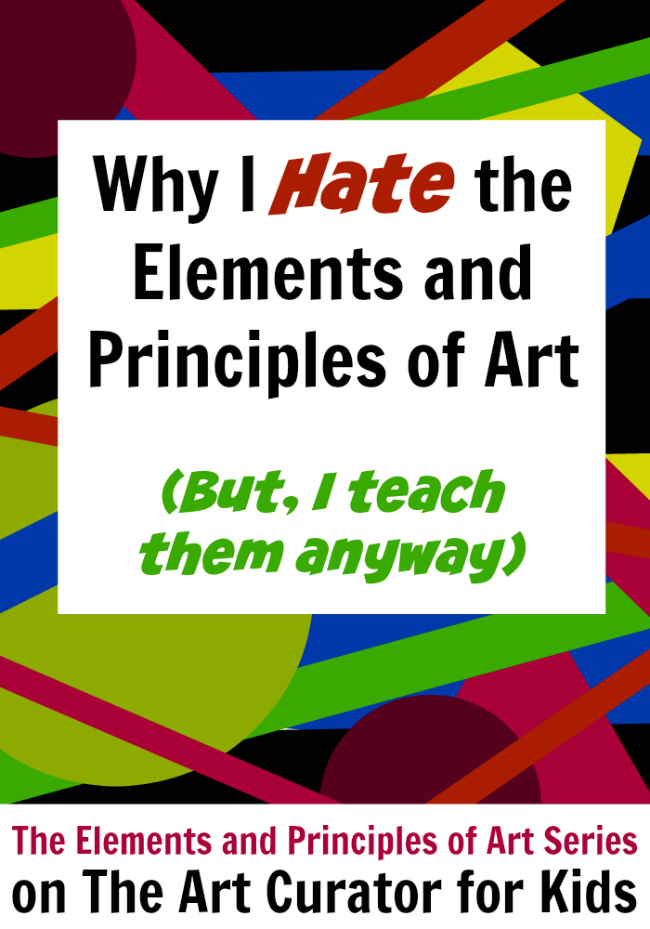
I once said that I hate the elements and principles of fine art, but that's not quite authentic. The elements and principles of fine art are a lens through which to view and understand art, just they are non what makes fine art educational activity vital. Art inspires higher level thinking, focus, a growth mindset, visual literacy, curiosity, respect, and connection. The elements and principles of design are an creative person'southward toolbox. Knowing the tools not but improves students' studio art skills and gives them deeper appreciation when viewing artworks, information technology helps make them amend, more informed citizens and prepares them for a visually complex and culturally interconnected modern earth in demand of creative problem solvers.
Below you lot'll observe an explanation of each of the elements and principles of fine art, including artwork examples and links to helpful materials for pedagogy the individual concepts.
Please note, this post includes Amazon affiliate links. As an Amazon Associate I earn from qualifying purchases.
Download the Free Elements and Principles Printable Pack
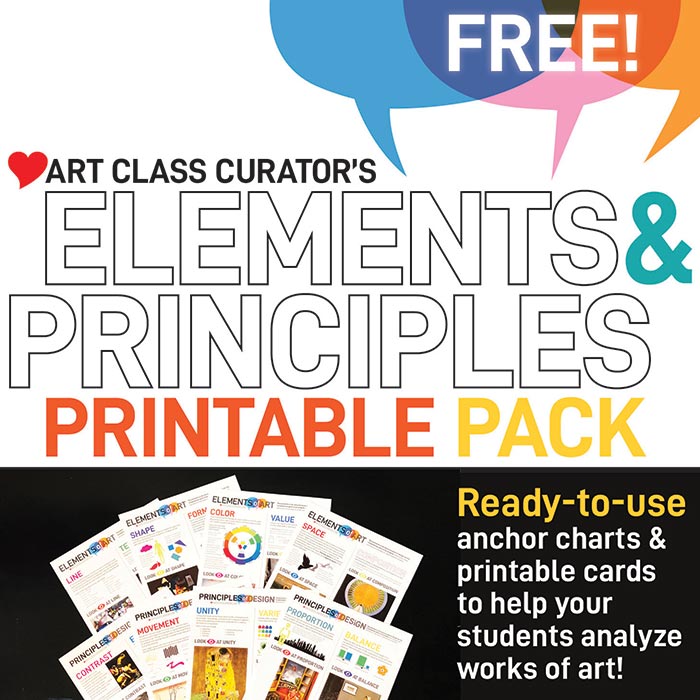

Costless Resource!
Elements & Principles Printable Pack
The Elements & Principles of Art are the foundation of every artwork, but teaching them can be a bore. Wake your students upward and engage them with full color artworks, easy to understand definitions, and idea-provoking higher level thinking questions. This versatile resources can exist hung in the classroom or used equally an art manipulative.
This pack of printables was designed to work in a diverseness of ways in your classroom when pedagogy the elements and principles of art. You tin can print and hang in your classroom equally posters/anchor charts or you can cut each element and principle of art in its own individual carte du jour to apply every bit a lesson manipulative.
Elements of Art Examples and Definitions
Scroll below for each element or click the link to be taken to the appropriate section:
- Colour
- Line
- Shape
- Class
- Value
- Texture
- Space
Color
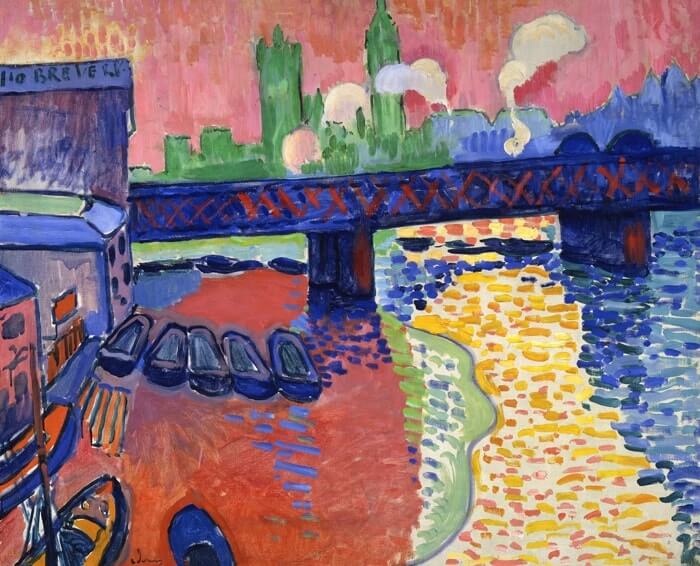
Color is the visual property of the paint of an object that is detected by the middle and produced as a result of the way the object reflects or emits light. The man eye is capable of seeing millions of colors, making it ane of the nearly diverse and powerful elements of art.
Each colour has three backdrop—hue, value, and intensity. Hue is the proper noun of a color. Value is a color's lightness or darkness, which is altered when black or white is added. Intensity refers to the intensity of a color, frequently measured past disrespect or dullness.
In this example of colour in art, Paul Klee shows contrast between high intensity and low intensity colors by using more than or less water with his paint.

Primary Colors
All colors come from the three principal colors—reddish, blue, and xanthous. You cannot mix any colors to create a primary color. They are the base hues for all other colors.
In this example of chief colors in fine art, Jacob Lawrence uses only neutral colors with the primary colors of cerise, blue, and yellow.
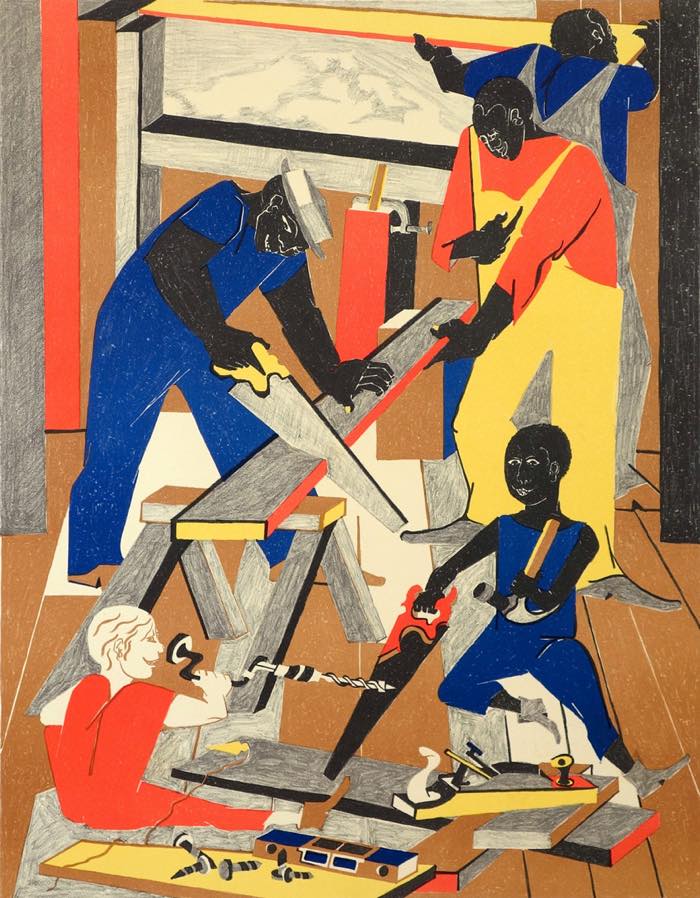
Looking for more examples of chief colors in art? Cheque out our post of color in art examples and definitions post!
Complementary Colors
To find a pair of complementary colors, simply draw a line from one of the color wheel to the other. Complementary colors are called that because, when placed side past side, they are pleasing to the center. They create an highly-seasoned contrast in artworks. Some of the basic complementary color pairings are red and green, purple and xanthous, and orange and blue.
In this example of complementary colors in art, Hiroshige uses red and green to create contrast.
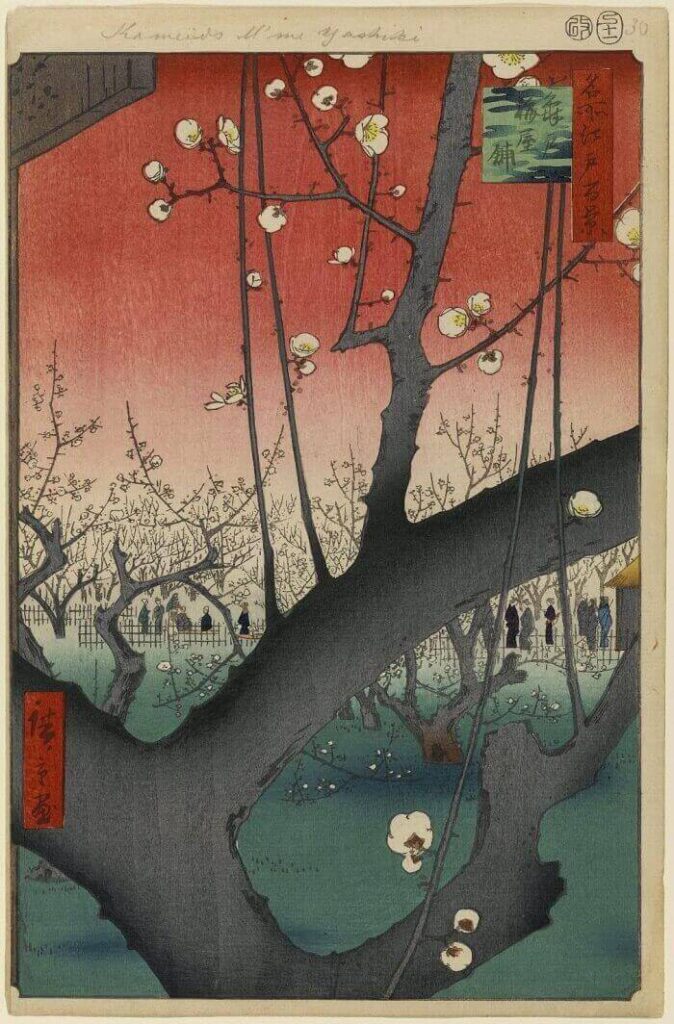
For more examples of complementary colors in art, bank check out the full color in art examples postal service!
Analogous Colors
To detect a pair of analogous colors, but choose 2 colors that are touching on the color wheel. Analogous colors create harmony and unity in art because they are made of the same hues. Some of the basic analogous color pairings are blue and green, cherry and orangish, and yellow and dark-green.
In this example of analogous colors in fine art, Vincent van Gogh uses colors next to i another on the color wheel–blue, greenish, and yellow.

Looking for more examples of analogous colors in fine art? Cheque out the Colour in Art: Examples & Definitions post!
Warm and Absurd Colors
Warm colors are reds, oranges, and yellows. They popular out towards viewer, and create energy and excitement in an artwork. On the other mitt, the absurd colors of blues, greens, and violets recede from the viewer'due south centre and create a calming effect.
In this instance of warm and absurd colors in art, Dorothea Tanning contrasts warm with cool colors to testify the clash of remainder and restlessness in insomnia.

For more examples of warm and cool colors in art, check out the total colour post!
Color in Art Resources

- The Ultimate Drove of Color in Art: Examples & Definitions
- Color in Art Lesson
- I Spy Colors in Art (Book)
- Vincent's Colors (Book)
- My Many Colored Days (Volume)
- The Virtual Instructor: Color Theory
- Arty Manufacturing plant: Color
Art Form Curator has a full colour wheel lesson available in the Curated Connections Library including all of following color wheel topics: chief, secondary, intermediary/tertiary colors, coordinating colors, complementary colors, monochromatic colors (tints/shades), cool/warm colors, and mood.
Line
Line is an element of fine art defined as the path of a point moving through space. There are many types of line in fine art. Lines may be continuous or broken, and tin can exist whatever width or texture. The great variety of line types make them an peculiarly useful tool in artworks.
Management of Line
The direction of a line can dramatically alter an artwork. Diagonal lines create movement an free energy. Horizontal and vertical lines add together stability and force to an artwork.
In this instance of directional lines in art, Artemisia Gentileschi uses both diagonal lines to testify the free energy and excitement of the scene and vertical lines (in Judith'due south attendant) to show forcefulness.
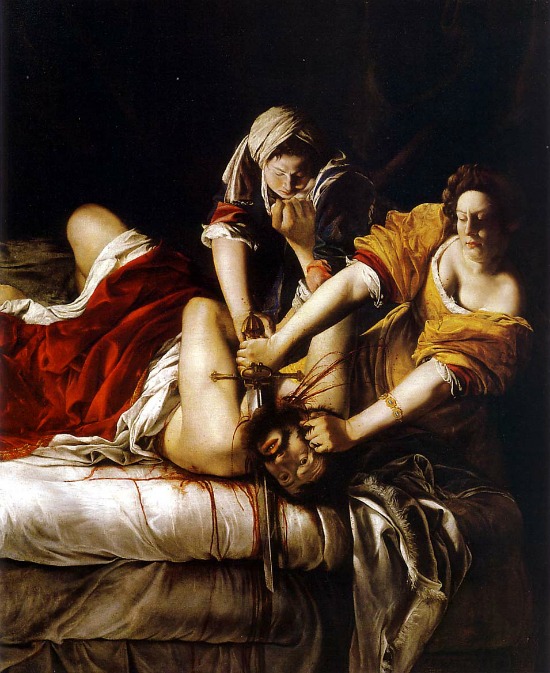
Looking for more examples of directional lines in fine art? Check out this post almost line!
Contour Lines
Contour lines form the exterior edge of a 3-dimensional shape and clearly defines the expanse information technology occupies.
Look at the confront of Leonardo da Vinci below; the profile lines around his facial features give his face form.
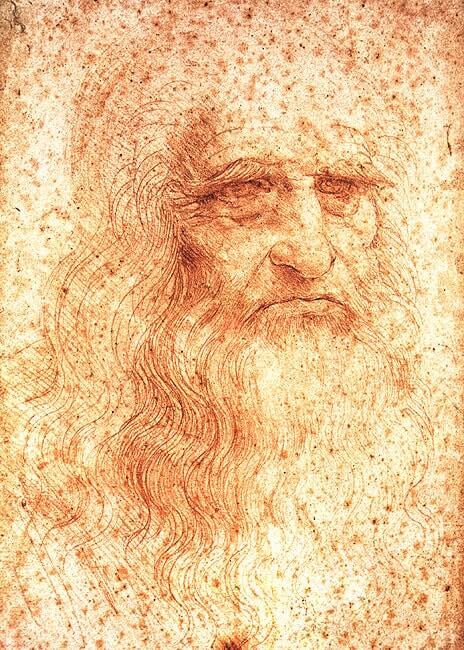
Looking for more examples of contour lines in art? Check out the Artworks That Show Line post!
Gesture Lines
Gesture lines are lines that show movement, particularly of characters in an artwork.
In this example of gesture lines in art, Marino Marini uses big swooshing gesture lines that capture the action and free energy of the subject.

Looking for more examples of gesture lines in fine art? Check out this post of types of line in art!
Implied Lines
Implied lines are non made by a concrete mark in an artwork, merely rather by visual proposition. Our eyes often follow them automatically, then they draw attention to specific parts of an artwork.
In this example of implied lines in art, Grant Woods uses implied lines to emphasize the hatchet in the center. Follow the implied lines from the ladder to the father's hand to George Washington's hand to the hatchet. The narrator'southward mitt leads to an implied line also.

Looking for more examples of implied lines in art? Check out our elements of art line mail!
Expressive Lines
Lines that show feeling and emotion are called expressive lines.
In this example of expressive lines in fine art, Edvard Munch uses wavy lines in dissimilarity with a strong straight diagonal line to convey anxiety.

Looking for more than examples of expressive lines in fine art? Bank check out the Artworks That Prove Line post!
Line in Art Resources
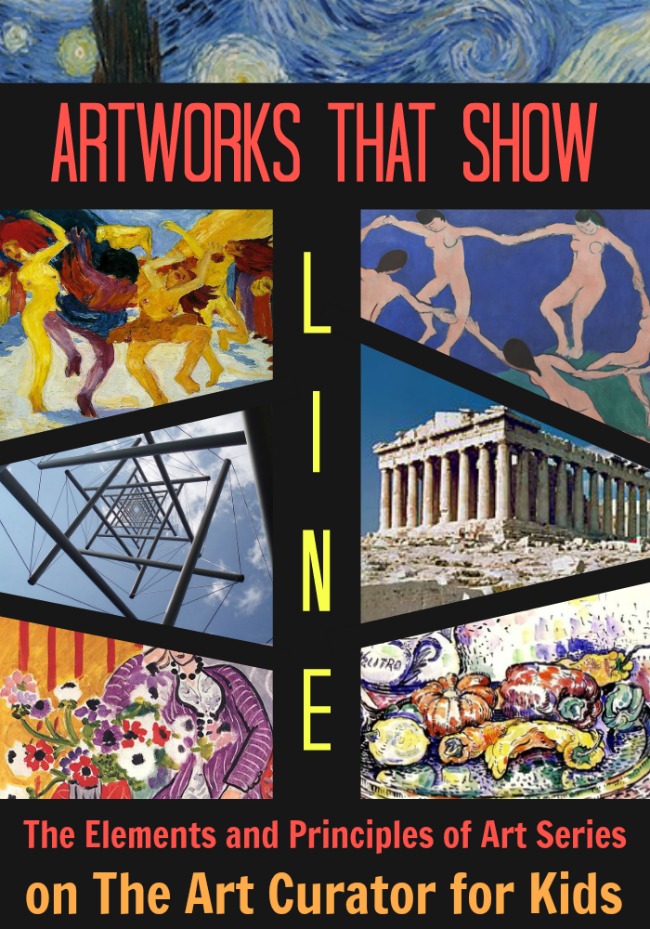
- The Ultimate Drove of Line in Art
- The Art of an Thought: Math and Art Integration with Sol Lewitt'southward Education
- Arty Factory: Line
Art Course Curator has a full line lesson available in the Curated Connections Library including all of following line topics: contour lines, gesture lines, implied lines, expressive lines, lines in compages, and characteristics of line.
Shape
A shape is an enclosed surface area of space created through lines or other elements of the composition.
Geometric Shapes
Geometric shapes are precise areas that tin can be made using a ruler or compass. These shapes can be simple or complex and more often than not give an artwork a sense of order.
In this example of geometric shapes in art, Picasso uses circles, triangles, crescents, and rectangles.

Looking for more examples of geometric shapes in fine art? Check out the Artworks That Use Shape post!
Organic/Free-Class Shapes
Organic shapes are complex and imprecise. They give works of fine art a natural feeling.
In this artwork, Grace Hartigan uses a diversity of examples of organic and free-course shapes.

Looking for more than examples of organic shapes in art in art? Check out this list of fine art using shape!
Shape in Art Resource
- The Ultimate Collection of Shape in Art
- Paper Sculpture Project Inspired by Geometric MADI Art
- When a Line Bends . . . A Shape Begins (Book)
- I Spy Shapes in Art (Volume)
- Arty Manufactory: Shape
Course
Grade is an element of art closely related to shape. Similar shape, form can exist geometric or organic. However, unlike shape, class is always three-dimensional. A class is measurable by length, width, and peak, and encloses volume. Forms can be well-defined, such as a cube, or they tin be complimentary-form, such as an animal. They can be created past combining two or more shapes and are often defined by the presence of shadow and how low-cal plays confronting information technology in an artwork.
In this examples of form in art, Dalí uses geometric forms (spheres) to create his image.

In this example of form in art, Niki de Saint Phalle uses organic form.
Form in Art Resources
- The Virtual Instructor: Form
- Set Free the Angels: How Carved Sculptures Are Made
- National Gallery of Art: Form (3rd-4th Course Lesson)
Value
Value in art refers to the lightness and darkness of colors and is oft described in varying levels of contrast. White is the lightest value while blackness is the darkest. To create a tint of a color, the artist adds white. To create a shade, the artist adds black.
In this example of value in art, Rufino Tamayo adds white to a color to create a tint in the clothes of the women, one of the baskets, and in the checkerboard on the wall.

In this instance of value in fine art, Dürer creates a wide range of values using the shading techniques of hatching, cross-hatching, and stippling.
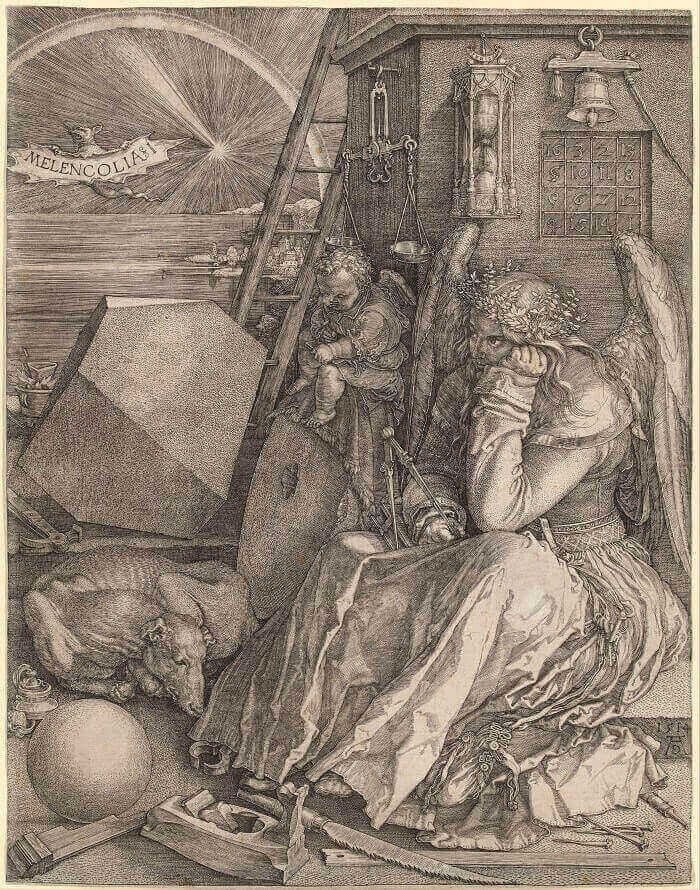
Value in Art Resources
- Drawing Dimension – Shading Techniques (Book)
- The Virtual Instructor: Value
- NY Times: 4 Ways to Remember nigh Value
Texture
Texture refers to the tactile qualities of a surface. This element of art deals with the way objects feel or the mode it looks like they would feel.
Tactile or Bodily Texture
Tactile texture is the actual feeling of a surface that tin can be touched. Think of the actual texture of a sculpture or a painting created with the impasto technique.
In this example of tactile or actual texture in sculpture, Meret Oppenheim uses bodily fur to encompass the saucer, cup, and spoon.
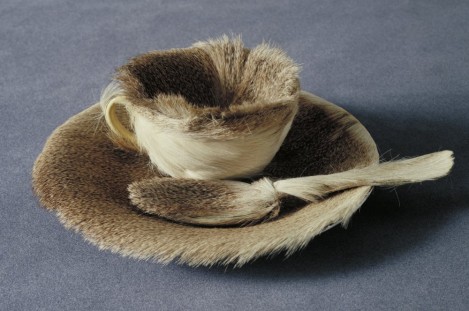
Impasto is the technique of applying pigment very thickly to the surface. In this closeup of Water Lily Swimming, yous can see Monet's thick awarding of paint to create actual/tactile texture.
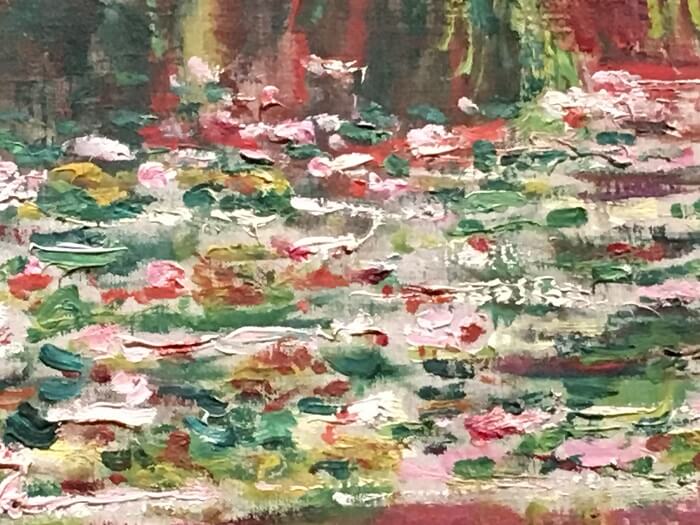
Looking for more than elements of art examples of tactile texture in art? Check out the Texture in Art Examples mail!
Visual Texture
Visual texture is the illusion of texture in an artwork. Recollect of a photo of a forest. The texture of the trees and leaves is seen, but the photo remains smooth.
Albrecht Dürer mimics creates the visual texture of thick fur in his painting of Hieronymus Holzschuher, simply the actual texture is that of oil paint.
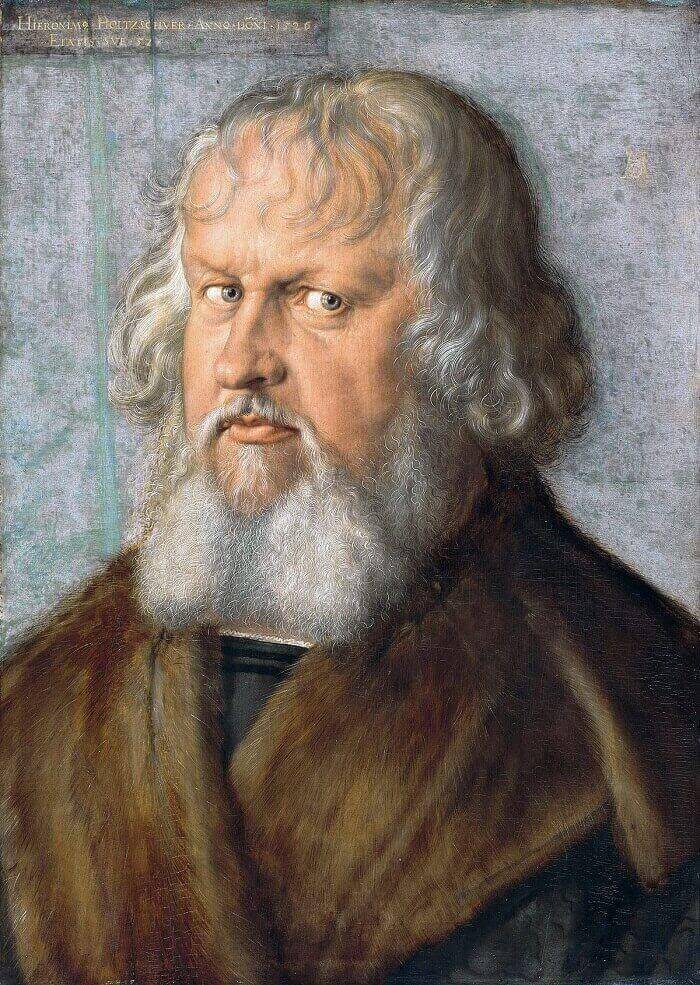
For more than examples of visual texture in fine art, check out our post of texture in art examples!
Texture in Art Resource
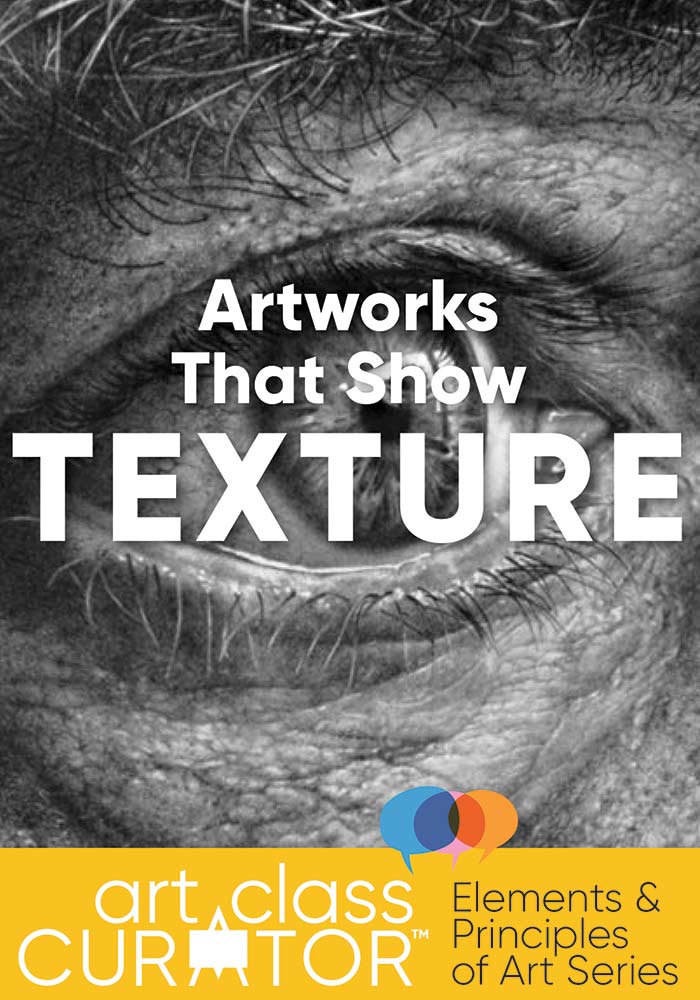
- The Ultimate Collection of Texture in Art Examples
- Sophia: Texture
- High-sounding Mill: Texture
- Rodin'sThe Burghers of Calais
Space
Space is the element of fine art that is concerned with how an artwork depicts depth. It is how artists make a ii-dimensional surface look three-dimensional. Space tin requite the illusion of objects in an artwork being close, far away, or overlapping one another.
In this example of space in art, John Sloan uses overlapping, foreshortening, relative size, perspective, and more. For more information about this painting and how artists depict space, bank check out this weblog post about the artwork.

Linear Perspective
Linear perspective is the mathematical organisation by which an artist uses lines to create the illusion of deep, three-dimensional space on a two-dimensional surface.
Piero della Francesca was one of the forerunners of linear perspective. In Ideal City, he used one-point linear perspective to show the depth of the space.

Looking for more than examples of linear perspective in art? Check out the Artworks That Show Space mail service!
Atmospheric Perspective
Atmospheric perspective, sometimes called aeriform perspective, refers to how objects that are far away ofttimes announced fuzzier or less detailed than objects that are close due to the dissimilarity betwixt lite and dark being increasingly reduced by the effects of atmosphere. Artists use value and shading to mimic atmospheric perspective and give their artworks a realistic appearance.
In this instance of atmospheric perspective in art, the trees and mountains in the background are fuzzier and less detailed than the items in the foreground.
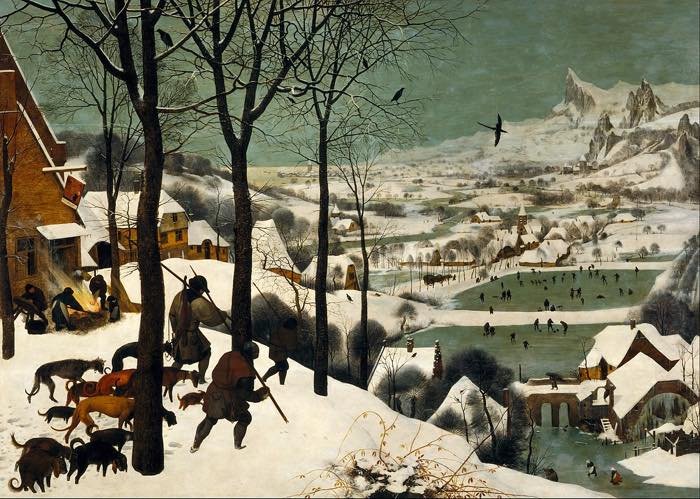
Looking for more examples of atmospheric perspective in art? Check out this list of space in art examples!
Positive and Negative Space
In improver to space being a mode to testify depth, artists likewise utilise positive and negative space every bit elements of art. Positive infinite is the areas of the artwork filled with the content, and negative space is the infinite in between.
In Rodin's The Cathedral, the empty negative space between the easily creates every bit much emotion and ability as the positive space of the hands.
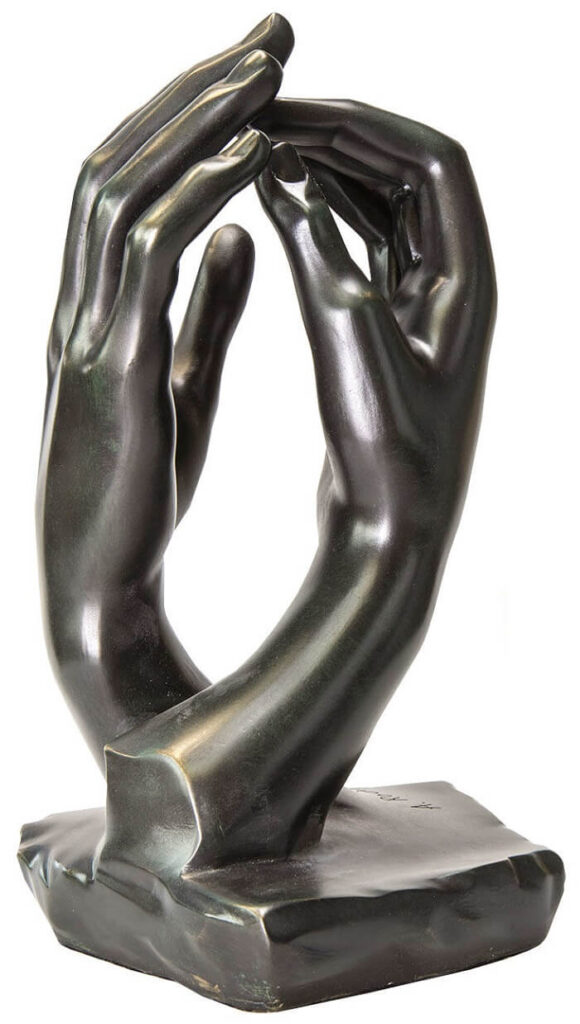
For more examples of positive and negative space in fine art, check out our elements of fine art space post.
Space in Fine art Resource
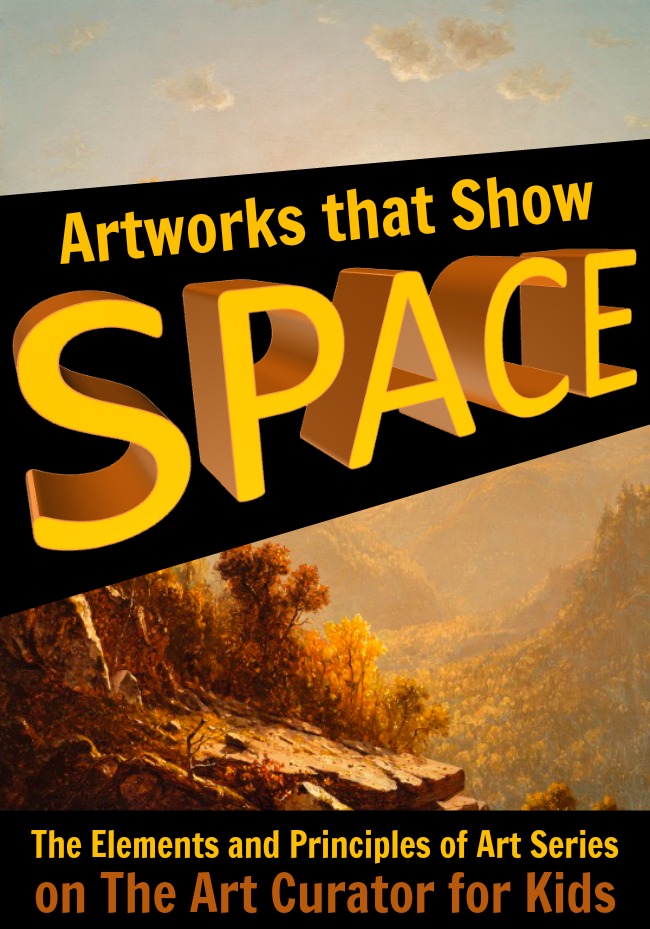
- The Ultimate Collection of Space in Fine art Examples
- How Artists Describe Space
- Perspective Fabricated Like shooting fish in a barrel (Volume)
- Sophia: Space
- NY Times: 5 Ways to Think About Space
Download the Free Elements and Principles Printable Pack

This pack of printables was designed to work in a variety of ways in your classroom when teaching the elements and principles of art. Y'all can print and hang in your classroom as posters/anchor charts or yous can cut each element and principle of art in its ain individual card to use every bit a lesson manipulative.
More Elements of Art Examples
For more than examples of elements and principles of fine art, check out more from our elements of fine art examples series below.
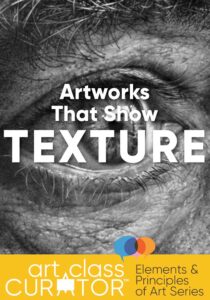
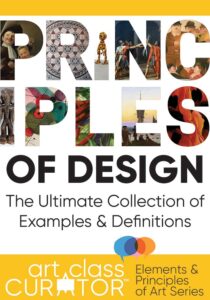

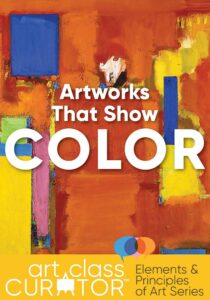



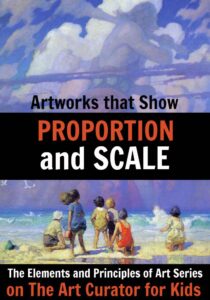
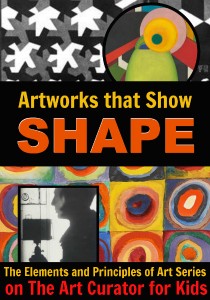
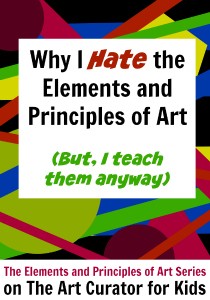

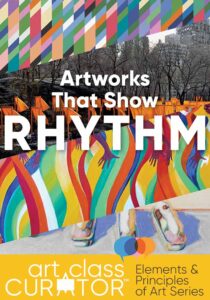
Source: https://artclasscurator.com/elements-of-art-examples/#:~:text=The%20principles%20of%20design%20are,a%20wide%20range%20of%20effects.
0 Response to "What Is the Way in Which Artists Arrange the Elements of Art in Their Artwork?"
ارسال یک نظر